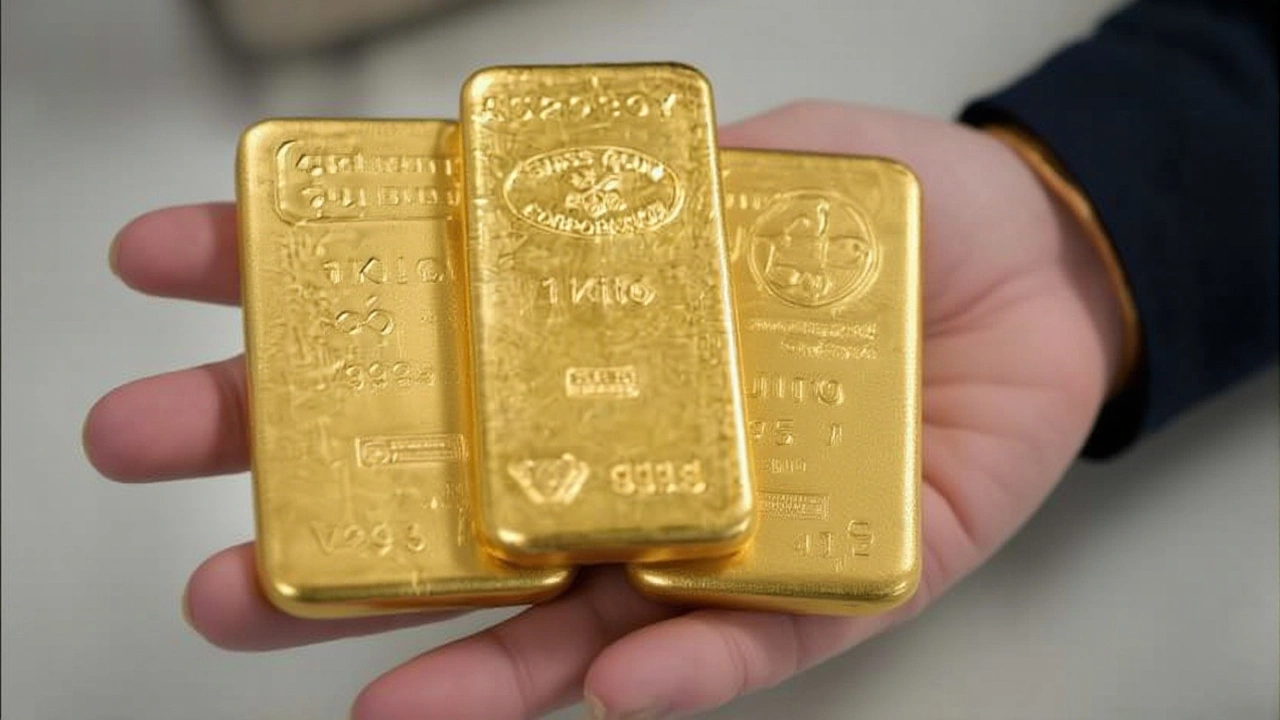Business
When talking about Business, the organized effort of creating, buying, selling, or delivering goods and services to meet demand. Also known as Commerce, it drives economic growth, shapes employment, and fuels innovation across every sector. In today’s volatile world, Gold, a precious metal used as a store of value and hedge against uncertainty and Inflation, the steady rise in prices that erodes purchasing power have become key lenses for any Business analyst. The Federal Reserve, the U.S. central bank tasked with managing monetary policy and broader Market, the collective arena where assets are bought and sold interact in ways that reshape strategies daily. Business encompasses market analysis, requires real‑time data, and is influenced by central‑bank decisions; these connections form the backbone of the stories you’ll see below.
Why Gold, Inflation, and the Fed Matter to Business
Gold isn’t just a shiny metal; it serves as a safety net when confidence in fiat currencies drops. Recent headlines show gold breaking the $4,000 per ounce barrier, a level that only appears when investors fear a slowdown or policy shock. This price surge illustrates a classic Gold influences investor strategies relationship: as gold climbs, businesses reassess capital allocation, hedging, and cash‑flow forecasts.
Inflation, on the other hand, directly pressures profit margins. When costs rise faster than sales, companies must decide whether to pass on prices, absorb the hit, or find efficiency gains. This creates a clear Inflation drives market reactions pattern: higher consumer prices trigger central‑bank moves, which in turn ripple through equity and bond markets. For any business leader, tracking inflation trends is as essential as watching quarterly earnings.
The Federal Reserve’s stance often determines the speed and direction of both gold and inflation. A tighter monetary policy—higher interest rates—can strengthen the dollar, making gold more expensive in local terms and dampening inflation. Conversely, a looser stance fuels currency weakness, pushing gold higher and stoking price growth. This Federal Reserve influences market dynamics link means that every policy comment or meeting minutes can reshape business forecasts across the board.
Putting it together, business decisions sit at the intersection of these forces. When the Fed signals a potential shutdown or policy uncertainty, markets react sharply, as seen in the recent gold rally. Companies with exposure to raw material costs watch inflation numbers like a weather forecast, adjusting procurement and pricing strategies accordingly. Understanding how gold, inflation, and the Federal Reserve intertwine equips businesses to anticipate risk, allocate resources wisely, and stay ahead of competitors.
Below you’ll find the latest articles that break down how these forces are shaping the market right now. From detailed gold price analysis to inflation’s impact on supply chains, each piece adds a layer to the bigger Business picture. Dive in to see how the numbers translate into real‑world moves for companies across the globe.
Joan Branson, Wife of Virgin Founder Richard Branson, Dies at 80 After 50-Year Marriage
Joan Branson, the private and beloved wife of Virgin Group founder Richard Branson, died at 80 after 50 years of marriage. Her quiet strength shaped his empire, and her loss leaves a void no public accolade can fill.
Microsoft Makes Edge for Business the World’s First Secure Enterprise AI Browser at Ignite 2025
Microsoft transformed Edge for Business into the world's first secure enterprise AI browser at Ignite 2025, adding Copilot Mode with agentic workflows, enterprise controls, and multi-tab reasoning—optional, secure, and designed for productivity without compromise.
Gold Tops $4,000/oz for First Time as Markets React to Fed Shutdown
Gold tops $4,000/oz on Oct. 7, 2025 amid U.S. shutdown, high inflation, dollar weakness and strong central‑bank buying, reshaping investor strategies.


